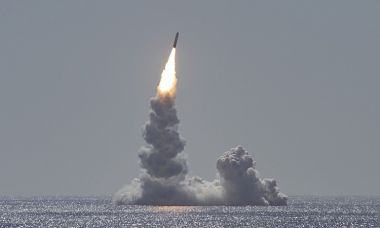The US and Russia’s Nuclear Weapons Deployment in Europe
US Criticizes Russia’s Nuclear Weapons Deployment in Belarus
The United States has recently condemned Russia for deploying nuclear weapons in Belarus. This criticism comes as a surprise, considering that the US itself has maintained a stockpile of about 100 atomic bombs in various European countries for a significant period of time.
Russia’s Condition for Withdrawing Nuclear Weapons from Belarus
Alexey Polishchuk, the head of the Independent States Community Department at the Russian Ministry of Foreign Affairs, has stated that Moscow will only consider withdrawing its tactical nuclear weapons from Belarus if the US reciprocates by removing similar weapons from Europe. This demand marks the first time Russia has proposed a reciprocal condition regarding the withdrawal of nuclear weapons from Belarus.
Russia’s Dissatisfaction with US Nuclear Deployments in Europe
Despite this being the first time Russia has put forward a “quid pro quo” condition, it has previously expressed discontent with the presence of US nuclear bombs deployed on the territories of its European allies. These concerns have emerged due to the agreements made by the US to share nuclear weapons with NATO members.
US Nuclear Weapons Deployment in Europe
The US began deploying nuclear warheads in its NATO allies’ bases in Western Europe during the 1950s as a deterrent against the Soviet Union during the Cold War. The peak of US nuclear weapons in Europe reached over 7,000 in the 1970s, but since then, the numbers have significantly decreased due to arms control agreements and the declining tensions with the Soviet Union.
Currently, the US still has tactical nuclear weapons stationed at six bases in Belgium, Germany, Italy, the Netherlands, and Turkey. However, the UK and France possess their own nuclear forces and no longer host US nuclear weapons.
Details of US Nuclear Weapons Inventory in Europe
A report released by the NATO Parliamentary Assembly’s Security and Defense Committee in 2019 revealed that the US stores more than 150 nuclear weapons at bases in Belgium, Germany, Italy, the Netherlands, and Turkey. These nuclear weapons, known as gravity bombs, fall under the B61 type and are designed to be dropped from bombers or fighter aircraft.
The B61 is the last remaining tactical nuclear weapon in the US arsenal and has an explosive yield of approximately 50 kilotons, equivalent to 50,000 tons of TNT. It is worth noting that two US nuclear bombs were deployed in Hiroshima and Nagasaki in 1945, resulting in the deaths of over 100,000 people.
These nuclear weapons are not permanently attached to weapon systems or aircraft but are instead stored in underground bunkers operated by the Weapons Security and Storage System (WS3). While they are stored on European soil, the US retains full control over the activation codes and access to these weapons.
Strategic Justifications and Debates Surrounding US Nuclear Presence in Europe
The initial deployment of US nuclear weapons in Europe aimed to reassure NATO allies during the Cold War period when NATO forces were considered inferior to those of the Soviet Union and the Warsaw Pact. This presence was seen as a means of compensating for NATO’s numerical inferiority.
Following the end of the Cold War, there have been ongoing debates regarding the necessity of maintaining these nuclear weapons in Europe. Critics argue that the military value of these weapons is limited, and therefore, their presence is not justified. They raise concerns about the potential risks associated with hosting nuclear weapons on foreign soil.
On the other hand, proponents of maintaining US nuclear forces in Europe emphasize that these weapons provide NATO with crucial military deterrence capabilities. They also argue that the presence of US nuclear weapons serves as a symbol of Washington’s commitment to its allies, demonstrating its readiness to defend them when needed.
Additionally, some proponents argue that keeping these weapons can provide leverage in future diplomatic negotiations with Russia. They believe that the US should only consider withdrawing its nuclear weapons from Europe once significant concessions are obtained from Russia, as Moscow has previously advocated for their elimination.
Comparison with European Nuclear Weapon Ownership
France, the UK, and Russia are the only European countries possessing nuclear weapons. According to the Stockholm International Peace Research Institute (SIPRI), Russia maintains the highest number of nuclear warheads worldwide, with an estimated 5,977 warheads. However, approximately 1,500 of these warheads have exceeded their intended operational lifespan.
Out of Russia’s total inventory, around 1,588 nuclear warheads are actively deployed, either mounted on missiles or stored at bases with permanent personnel, ready for launch upon command.
Russia and the US Exchange Accusations
The US has yet to comment on Polishchuk’s request for the withdrawal of nuclear weapons. However, the Russian Ambassador to the US, Anatoly Antonov, recently accused the US of hypocrisy, criticizing their opposition to Russia’s decision to deploy nuclear weapons in Belarus. He argued that US foreign policy exhibits a double standard, allowing itself to take actions yet constraining other nations, particularly Russia.
Conclusion
The issue of nuclear weapon deployment remains a contentious topic between the US and Russia. While the US criticizes Russia’s actions in Belarus, it is important to acknowledge the significant presence of US nuclear weapons stored in European countries. The ongoing debate centers around strategic justifications, military value, and the potential role of these weapons in future diplomatic negotiations.


